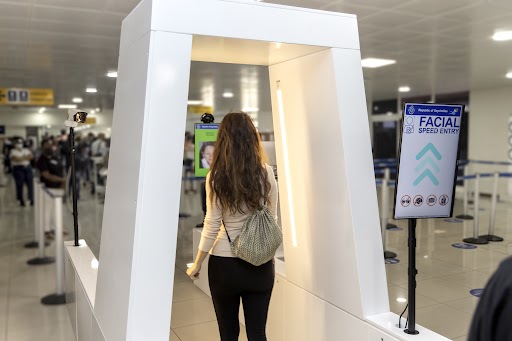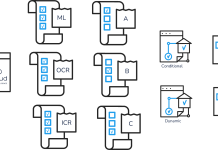Next-generation systems are making the future of seamless travel a reality; Renaud Irminger, CEO and co-founder of Travizory Border Security, tells us more
The border security landscape is undergoing significant transformation, driven by the sophisticated demands of the traveling public and the rise of digital technology. Where traditional providers once depended on legacy systems, a new paradigm centered around ‘seamless travel experiences’ is emerging.
Research found that 36% of travelers were discouraged from traveling to certain destinations due to immigration requirements. In addition, 87% of travelers indicated they would share their immigration information to speed up the airport arrival process, while 66% of travelers requiring a visa prefer obtaining it online before travel.
This backdrop sets the stage for a new generation of security systems that have learned from tech-savvy sectors like banking, healthcare, and retail. Border agencies, carriers, airports, and travelers will all benefit from streamlined, digital processes that prioritize security and convenience and improve satisfaction. Above all else, governments stand to reap the immense benefits of digitalization at the border.
Integrated systems for enhanced collaboration
Traditional border systems often operate in isolation, with immigration, customs, and security agencies each managing separate data sets and processes. Compartmentalization can lead to inefficiencies and security gaps. Today’s disruptors are changing this by developing digital platforms that integrate data from various sources into a consolidated view of the individual and carrier. For example, Travizory’s BorderTech solutions are fully integrated to support the sharing of traveler information and risk assessments between agencies, enhancing the ability to identify and promptly respond to potential threats. The information can also be communicated effectively from a command and control center directly to front-line officers.
Real-time, actionable intelligence
Real-time data is invaluable when making crucial decisions on admissibility or risk classification. New platforms exemplify the shift towards using real-time data to make informed border security decisions and interventions. Using systems such as API-PNR directly from the transport carrier to profile and identify persons of interest before they reach the border is crucial for agencies looking for more robust security. The multi-modal API-PNR targeting systems offered by companies like Travizory deliver exactly that. They can process, analyze, and present vast amounts of data to officials, focusing on actionable insights and intelligence. Decision-making, strategic planning, and resource management can all be improved by making real-time data available to a team of cross-agency specialists.
Analyzing data at scale and predicting emerging threats
The transformative power of AI has been felt worldwide in almost every sector – and border security is no different. Over the past few years, AI has become increasingly accessible and mainstream, supporting the analysis of vast data sets quickly, precisely, and reliably.
By leveraging AI, agencies can process and interpret traveler data from diverse sources, from travel records to social media activities, at scale. This capability enables the detection of subtle patterns and anomalies that indicate potential security threats. For instance, AI algorithms can identify unusual travel routes or inconsistent booking patterns that may suggest illicit activities. Using AI to review and learn from historical traveler data can also help to predict threats and identify emerging trends. Travizory’s in-built AI-powered risk engine can elevate the work of border officers, automating manual review and enabling a dynamic response to evolving global threats.
Biometric enrolment for expedited entry/exit
Facial biometric technology has revolutionized border control through remote identity verification and biometric enrolment. This technology captures unique facial features to create digital representations that can be quickly matched against databases during border checks. Additionally, the accuracy of facial recognition prevents identity fraud and restricts the movement of individuals with forged documents. Countries like Singapore have implemented automated entry and exit systems that significantly reduce wait times while enhancing security. In Seychelles, Travizory’s biometric corridor allows authorities to categorize travelers on arrival according to their pre-travel risk assessment and match their face to the pre-submitted selfie captured via the facial travel authorization. By making these processes mandatory, the Seychelles International Airport reported an 84% reduction in processing times by prioritizing low-risk travelers for expedited entry, allowing security personnel to focus on higher-risk individuals.
Moving beyond physical documents
A cornerstone of the digital transformation in border security is the transition away from physical documents. While this has yet to become a reality, many high-profile trials and pilots have been launched, all with the ambitious objective of replacing passports with faces. To truly digitalize borders, governments need a secure and interoperable means of identity verification that transcends the limitations of traditional passports and visa stickers.
The adoption of Digital Travel Credentials (DTCs) marks a significant evolution within the industry and across governments. Countries such as Singapore, the UK, and Finland are making huge strides by embracing DTCs and implementing the latest technological innovations in the market. As governments start to see the benefits of fully digital borders, people can expect fundamental changes in how they travel and the systems they engage with.
Best practices and the path forward
All of this change is emblematic of a shift towards a digital-first approach in global mobility, where convenience and security are not mutually exclusive but are, in fact, complementary facets of the same strategy.
Adhering to best practice frameworks established by organizations like IATA and ICAO is crucial for the successful adoption of digital technologies at the border. Governments, rightly so, must ensure that passenger data is secure and privacy is maintained. New systems must be built on these principles, complying with the most stringent laws and regulations, if they are to gain traction. Companies such as Travizory combine cutting-edge technology with decades of industry expertise. By aligning with international standards, new technologies (like DTCs) and industry disruptors, can be sure to meet these security standards and promote interoperability across different countries.
References

This work is licensed under Creative Commons Attribution-NonCommercial-NoDerivatives 4.0 International.












